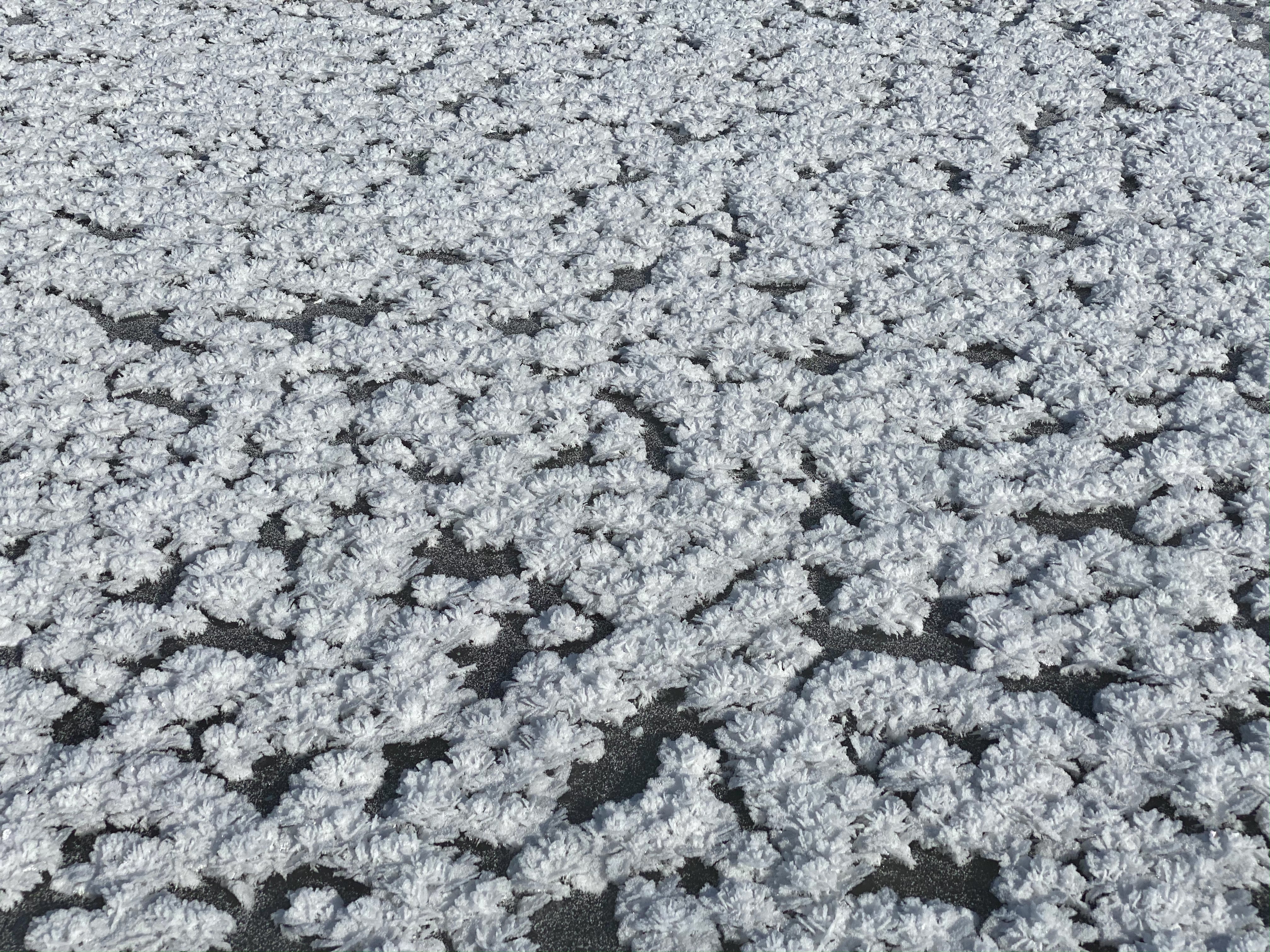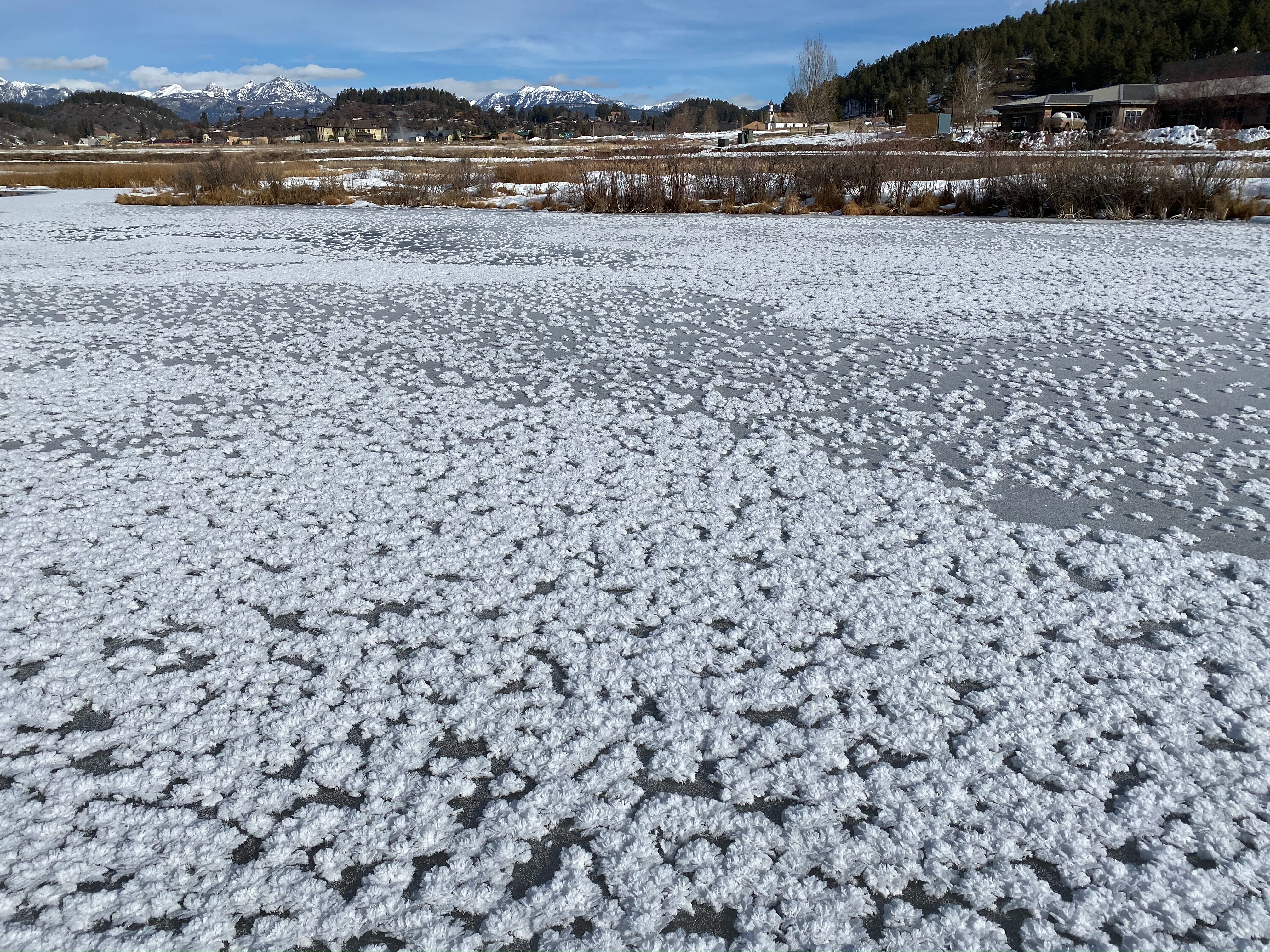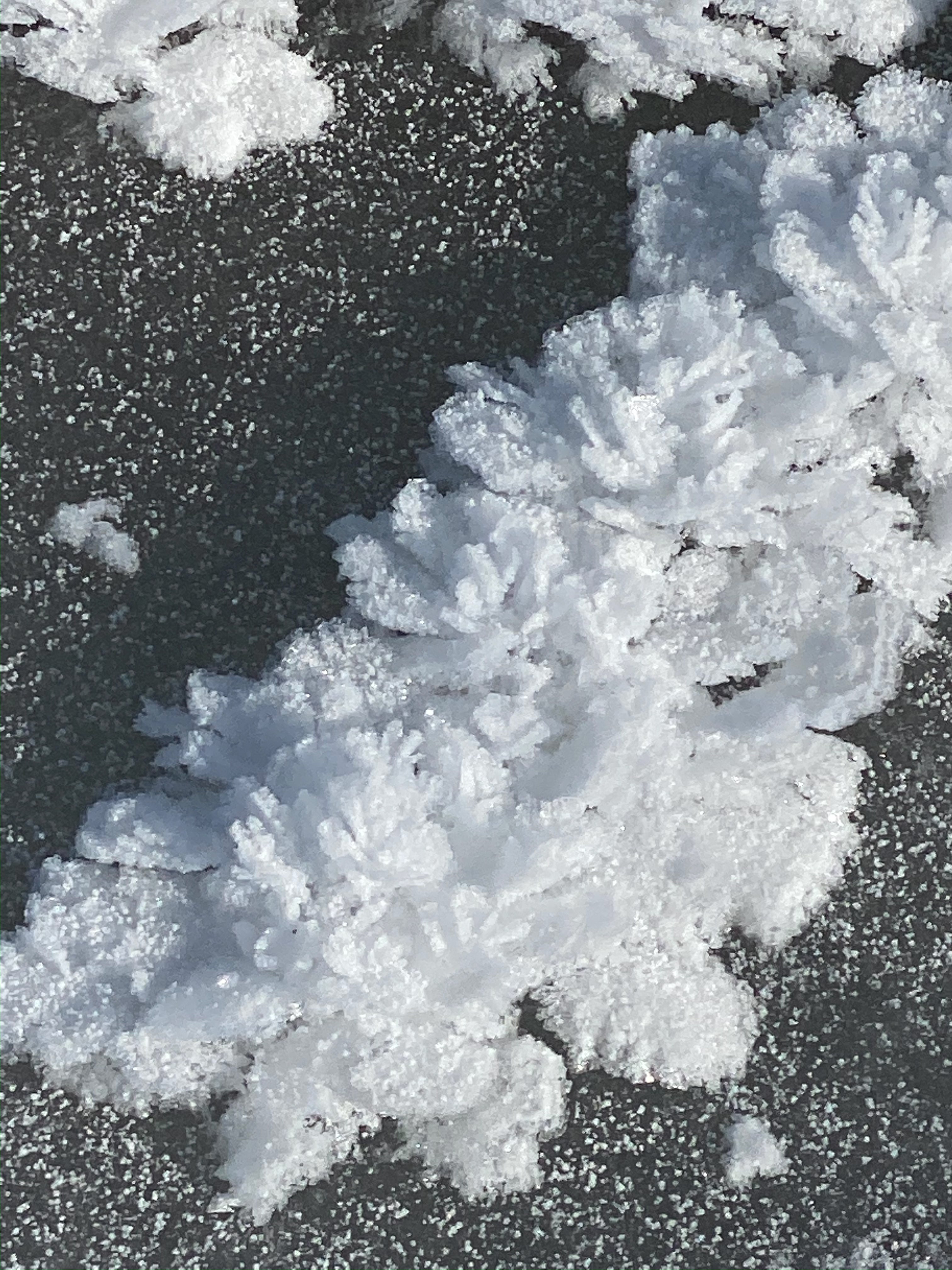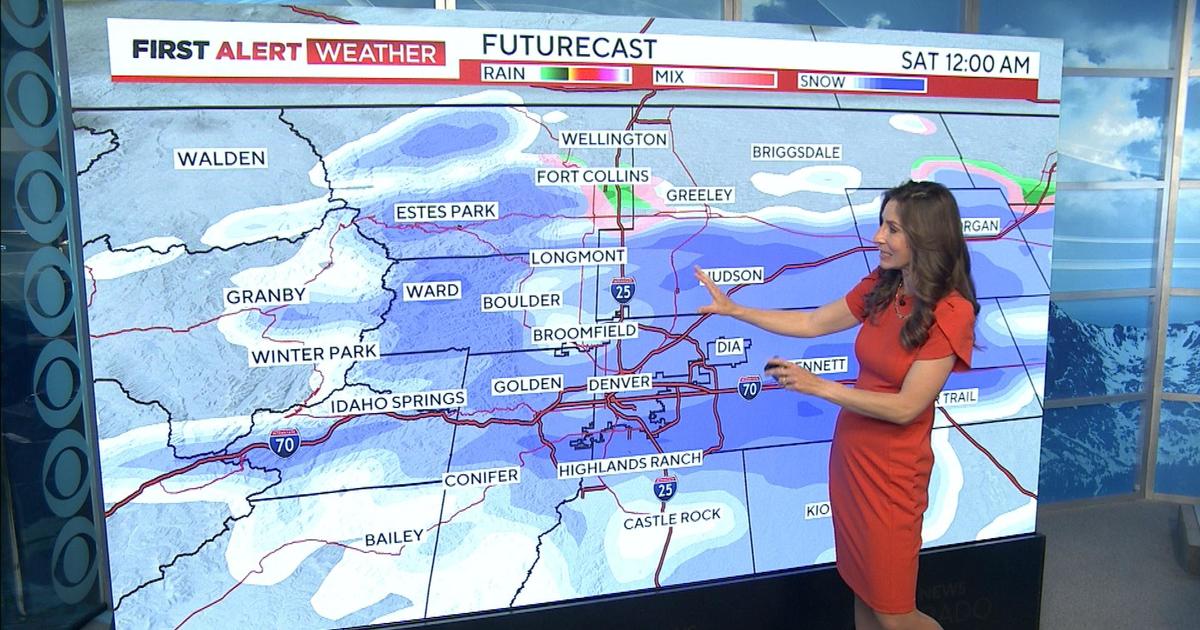Rare 'Frost Flowers' Seen In Southern Colorado On Christmas Eve
(CBS4) - Nature provided an extra special holiday gift to residents of Pagosa Springs this year, and those lucky enough to be walking along the San Juan River Walk near Town Hall during the late morning hours on Christmas Eve saw it.

The gift was a beautiful display of ice formations known as the 'frost flower' and it was captured on a partially frozen pond by T. Jay Carter using his iPhone 11 Pro Max. The sky at the time was mostly clear and a weather station less than a mile away reported a temperature of 32°F with a dew point of 28°F when these pictures were taken.

It's hard to say what caused these particular clusters of fern-like ice formations to form but we can make some guesses using basic principles of physics and meteorology. We can also use a research paper by Style and Worster to make some sense of this.
At the time these pictures were taken a nearby weather station reported a temperature of 32°F but thermometers are typically placed about 5 to 6 feet off the ground. Because of a process known as radiational cooling, which takes place overnight as the surface loses energy to the atmosphere, the air below a thermometer is often much colder, especially when the wind is calm or very light. This is why frost can form on surfaces even though air temperatures are above freezing.
So we can assume that the air temperature above the surface of the ice was likely several degrees colder than air 5 or 6 feet up. In fact at least one study suggests that the air temperature should be around 5°F for a frost flower to form on the surface of a frozen body of water.

We also know to get a frost flower there was a source of moisture present. In this case the most likely cause was either open water below the ice escaping through tiny cracks in the ice, or sublimation, a process in which a solid (ice) becomes a gas (water vapor) without melting. Style and Worster note in their paper that open water upwind could also play a role at times and we can see in Carter's pictures that we had some nearby. Carter also noted that it was overcast the night before.
Regardless of the source of the water vapor, as it entered the very cold air just above the ice, these awesome formations grew, resembling a field of flowers on the surface of the frozen pond.




